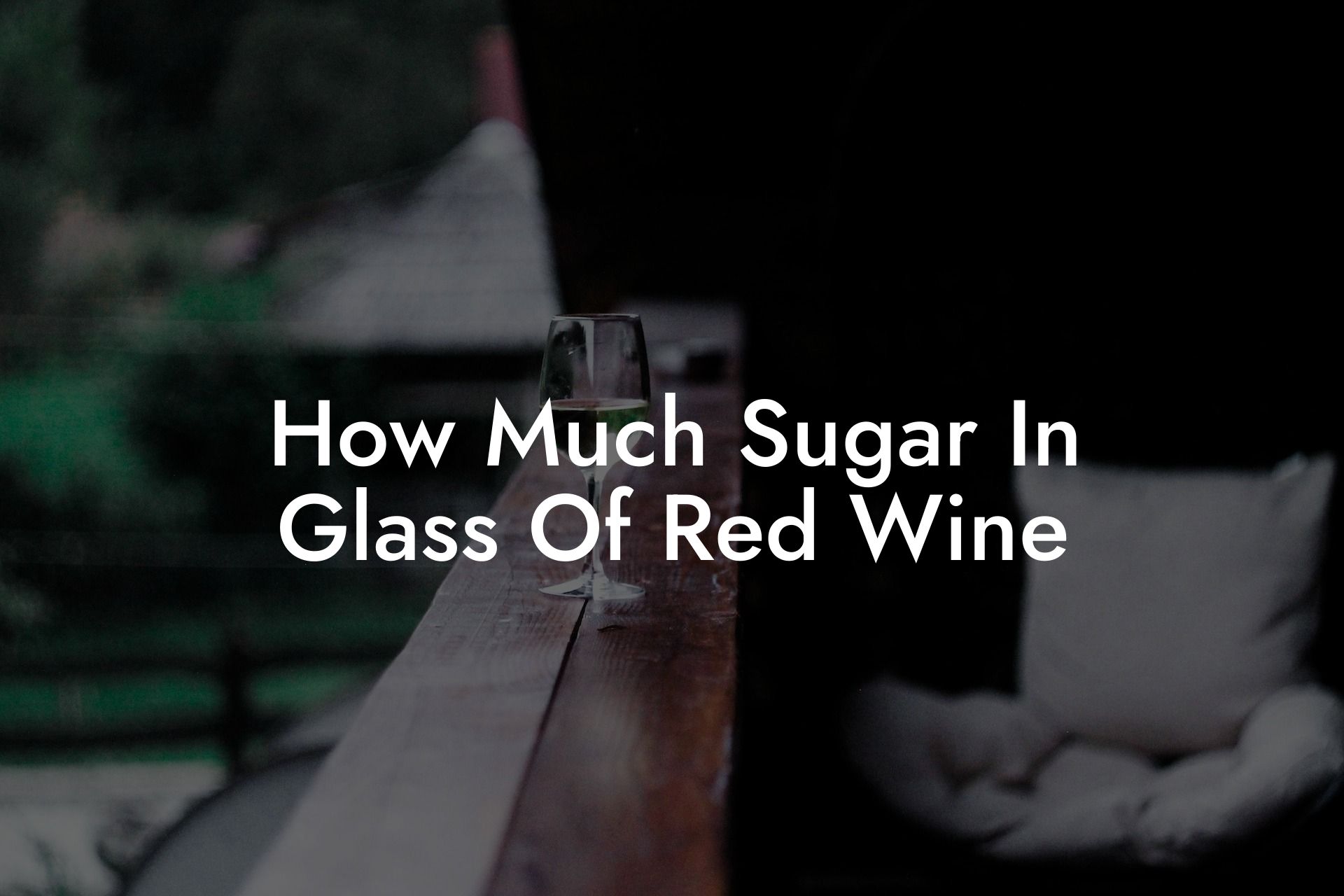Picture yourself at a social gathering, mingling and enjoying conversation with fellow creatives. You're confidently sipping on a glass of bold, rich red wine, and suddenly the thought crosses your mind: "How much sugar am I consuming with each glass?" Fear not, wine enthusiasts! This article will tackle that question while diving deeper into the world of red wine. Raise your glass and join us on this flavorful journey through the art and science of sugar in red wine.
How Much Sugar In Glass Of Red Wine Table of Contents
Sugar in Red Wine: The Basics
First and foremost, it is essential to understand that wine, in general, contains sugar. The fermentation process, where yeast converts sugar into alcohol, leaves residual sugar. Grapes have natural sugars, primarily glucose and fructose, which contribute to a wine's sweetness level.
Residual Sugar in Red Wine
- Residual sugar (RS) refers to the remaining sugar left in the wine after fermentation. Wines with higher residual sugar levels taste sweeter.
- Dry red wines typically have less than 2 grams of sugar per glass (5 ounces).
- Semi-dry red wines can have between 2-12 grams of sugar per glass.
- Sweet red wines have more than 12 grams of sugar per glass.
Note that each wine varies, and these numbers are just general guidelines to give you an idea of where your favorite reds may fall in sugar content.
Do You Want to Win a Free Bottle of Wine?
Don't miss out on the opportunity to win a free bottle of wine every week.
Enter our weekly prize draw today!
Understanding the Role of Sugar in Red Wine
Fermentation & Alcohol Content
As mentioned earlier, the fermentation process plays a crucial role in determining sugar content. Longer fermentation leads to lower residual sugar levels and higher alcohol content. The fermentation process can be stopped at any moment, thus leaving more residual sugar in the wine.
Wine Types & Sugar Content
Different types of red wine naturally exhibit distinct levels of sweetness. For example:
- Cabernet Sauvignon and Merlot tend to be drier, with less sugar content.
- Old World reds, like Chianti and Rioja, can be moderately dry to semi-sweet.
- Bottle-aged wines like Port and Madeira contain higher sugar levels, as they are fortified with additional sugar and alcohol during their aging process.
How Much Sugar In Glass Of Red Wine Example:
Imagine you're at a friend's electronic music event and decide to order a glass of red wine. Your preferred choice for the night is Cabernet Sauvignon, which has approximately 0.6 grams of sugar per glass (148ml). Compared to a can of cola, which has around 39 grams of sugar, your wine choice is relatively low-sugar. As you enjoy the night, you have a heightened appreciation for the complexities of red wine and its relationship with sugar.
Now that you possess the knowledge of sugar content in red wine, it's time to put it into practice. The next time you attend a Black Wine Club event or sip on your favorite red at home, you can approach each glass with newfound understanding and confidence. Explore more informative guides on our website and share your newfound knowledge with fellow wine-loving creatives. Together, let's uncork the secrets of the wine world and celebrate with the perfect pour of red.
Do You Want to Win a Free Bottle of Wine?
Don't miss out on the opportunity to win a free bottle of wine every week.
Enter our weekly prize draw today!












